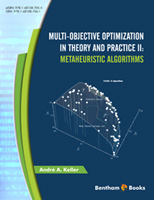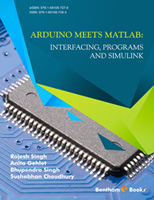An intelligent system is that which exhibit characteristics of learning, adaptation, and
problem-solving, among others. The group of intelligent system, conceived and designed by
human, is loosely termed Artificial Neural Network (ANN) System. Such ANN system is the
theme of the book. The book also describe nets (also called network or graphs), evolutionary
methods, clustering algorithm, and others nets, most of which are complementary to ANN
system.
The term “practice” in the title refers to design, analysis, performances assessment, and
testing. The design and analysis may be facilitated by the explanations, equations, diagrams,
and algorithms given. Performance assessments occur in any section that bear the name and
apply to any ANN system because they are standard independent methods and most ANN
system has an associated error feedback. Testing is exemplified by case studies and is given
toward the end of most chapters.
An interest in artificial neural sciences is a sufficient requirement to understand the content of
the book, though knowledge of signal processing, mathematics, and electrical/electronic
communication is an advantage. The book specifically takes a developmental perspective,
making it more beneficial for professionals. The book adopts a spiral method of description
whereby various topics are revisited several times; each visit introduces fresh material at
increasing level of sophistication. Each visit to a specific ANN type may also introduce new
ANN system(s) and/or new algorithm(s) as the case may be.
The book is divided into two parts (I and II). Part I contain five chapters. Chapter 1 introduce
the biological neurons and basic artificial neurons. From these, chapter 2 derive better
neurons and introduce statistical methods. Chapter 3 describe a framework of dynamic fuzzyneuron,
and explain the fundamental principle governing the design and analysis of ANN
system. To distinguish other algorithms (e.g. clustering algorithm) from learning algorithms,
chapter 4 describe fundamentals of genetic algorithm, clustering algorithms, and those other
algorithms complementary to ANN systems. Neural network is in chapter 3 introduced by
graph. Chapter 5 concludes part 1 by introducing quantum neural network, quantum maths
and logic. The chapter also describe Hodgkin-Huxley neuron, and memristance.
Similarly, part II consists of six chapters. In Chapter 6, artificial neuromorphic network, and
Widrow-Hoff learning are visited; so is fuzzy ANN system. While chapter 7 describes the
usual weighted, weightless ANN systems. It also introduces Bayesian ANNs, and discusses
general performance assessment methods. On the other hand, chapter 8 considers various
selection and combination strategy for ANN systems. Chapter 9 is dedicated to Bayesian networks. There are some promising ANN systems being considered in the research arena,
and also now in chapter 10, these ANN may revolutionize ANN throughput in future. In
chapter 11 implementation issues regarding Monte Carlo algorithm is visited, and also
implementation issues regarding neuromorphic networks is revisited.
The book attempts to impart considerable knowledge of know-how of ANN to the reader in
order to facilitate a novel development and research. Albeit also improve an ad-hoc ANN.
This may encourage and help a developer to meet any industrial increasing demand for novel
ANNs’ implementation and application.
Pierre Lorrentz
University of Kent,
United Kingdom





